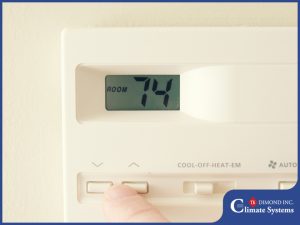Winters in this part of the United States can reach below-freezing temperatures. When this happens, your heat pump will utilize back-up functions to ensure your home receives consistent comfort. Here local HVAC contractor Climate Systems explains the differences between the auxiliary and emergency heating settings on your thermostat.

About Auxiliary Heating
A heat pump in heating mode extracts latent heat energy from the outdoor air, concentrates it and then circulates it through the home’s ductwork. As temperatures drop further to below-freezing levels, however, it may not be able to pull enough heat fast enough to keep your home’s indoor temperature at the desired level.
At this point, the auxiliary heating function is activated automatically by your thermostat. Here, the heat strips or the electric heating coils inside the indoor unit kick on, serving as a secondary heat source. The heat pump will continue to pull as much heat from the outdoor air as possible, with the heat strips making up the difference. Once outdoor temperatures rise, the secondary heat source is no longer required and is shut off automatically.
About Emergency Heating
Emergency heating, meanwhile, acts like its auxiliary counterpart. The only difference is that it needs to be activated and shut off manually on the thermostat. This setting is only used when the heat pump is incapable of pulling heat from the outdoor air, either due to a broken component inside the unit or an overall system malfunction.
When switched on, the aforementioned heat strips or coils kick in, serving as the primary heat source until the entire system is fixed. Emergency heating may not help your home reach your desired comfort levels, but it will keep it from getting too cold.
Schedule an HVAC maintenance appointment with Climate Systems today to ensure your heating system is in top shape for the winter months. We’re a family-owned and -operated company that specializes in residential and commercial HVAC installations and repairs. Call (724) 935-3900 or fill out our contact form to get started.

